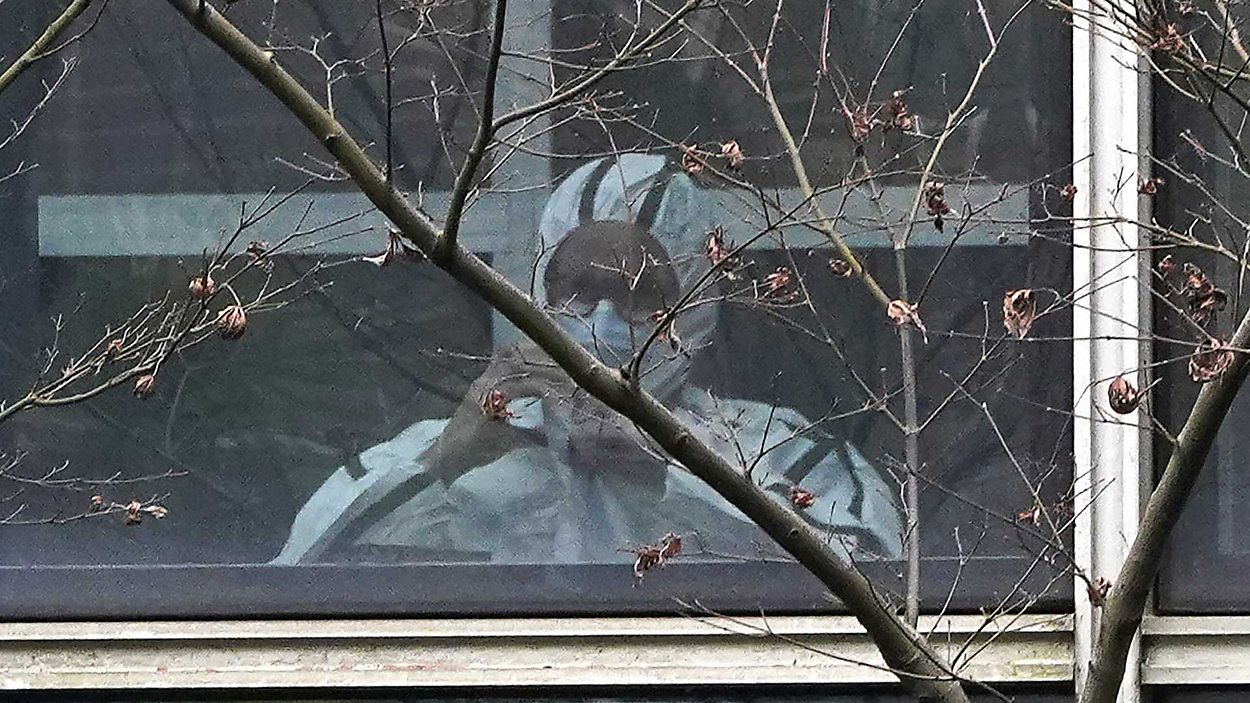The United States joined over a dozen other countries in penning a statement Tuesday that expressed “concerns” over a recent investigation headed by the World Health Organization into the origins of the COVID-19 pandemic.
While portions of the committee’s findings have been slowly revealed over the course of the past several weeks, the complete review was released Tuesday morning. The findings ultimately offered little new insight into how the virus first emerged, and left many questions unanswered.
Hours after its official publication, the U.S. and government officials from Australia, Canada, Czechia, Denmark, Estonia, Israel, Japan, Latvia, Lithuania, Norway, the Republic of Korea, Slovenia, and the United Kingdom released a statement saying the investigation was “significantly delayed and lacked access to complete, original data and samples.”
“We join in expressing shared concerns regarding the recent WHO-convened study in China, while at the same time reinforcing the importance of working together toward the development and use of a swift, effective, transparent, science-based, and independent process for international evaluations of such outbreaks of unknown origin in the future,” the statement read in part.
The countries said they "support a transparent and independent analysis and evaluation, free from interference and undue influence, of the origins of the COVID-19 pandemic."
When asked Tuesday if China’s government had thoroughly cooperated with the investigation, White House press secretary Jen Psaki said they had not been nearly transparent enough.
"They have not been transparent, they have not provided underlying data, that certainly doesn't qualify as cooperation,” she said, adding of the report: "We don't believe that in our review to date that it meets the moment.”
The joint study — led by the WHO and 17 Chinese experts — largely concluded that transmission of the SARS-CoV-2 virus from bats to humans through another animal is the most likely scenario and that a lab leak is “extremely unlikely.” It also said the role played by a seafood market where human cases were first identified was uncertain.
But the international team that drew up the long-awaited study also called it a “first start” during meetings on Tuesday, appealing for patience and noting all hypotheses — including the possible laboratory leak — cannot be fully ruled out.
Team leader Ben Embarek said team members faced political pressure from “all sides,” but insisted: “We were never pressured to remove critical elements in our report.” He also pointed to “privacy” issues in China that prevented sharing of some data, saying similar restrictions exist in many countries.
“This is only a first start — we’ve only scratched the surface of this very complex set of studies that need to be conducted,” Ben Embarek said. “And we have pointed to many additional studies that should be conducted from now on.”
The team proposed further research in every area except the lab leak hypothesis — a speculative theory that was promoted by former President Donald Trump, among others.
The coalition of 14 countries concerned over the findings agreed with the need for further testing, writing in part: “We note the findings and recommendations, including the need for further studies of animals to find the means of introduction into humans, and urge momentum for expert-driven phase 2 studies.”
Suspicion of China partially underpinned the theory that the virus escaped from a lab in Wuhan, the Chinese city where the virus was first identified. The report cited several reasons for all but dismissing that possibility, saying such laboratory accidents are rare, that the labs in Wuhan were well-managed and there is no record of viruses closely related to the coronavirus in any laboratory before December 2019.
“This is a dynamic process. Nothing is cast in stone. There are no firm conclusions,” Ben Embarek said. “And I think that’s how we should look at the whole outcome of this report — and this work.”
Researchers listed four scenarios in order of likelihood for the emergence of the new coronavirus. Topping the list was transmission from bats through another animal, which they said was likely to very likely. They evaluated direct spread from bats to humans as likely, and said that spread to humans from the packaging of “cold-chain” food products was possible but not likely.
That last possibility was previously dismissed by the WHO and the U.S. Centers for Disease Control and Prevention but researchers on this mission have taken it up again, further raising questions about the politicization of the study since China has long pushed the theory.
While it’s possible an infected animal contaminated packaging that was then brought to Wuhan and infected humans, the report said the probability is very low.
The Associated Press contributed to this report.



